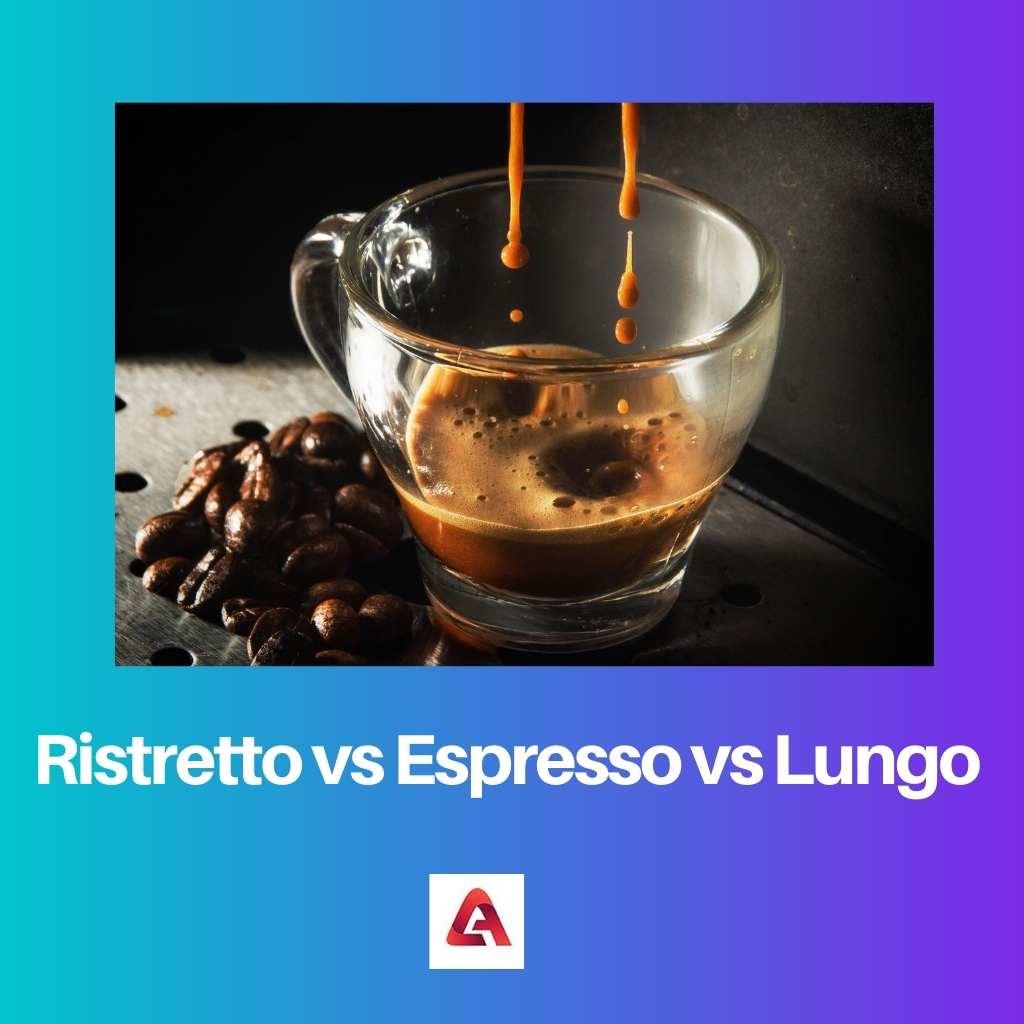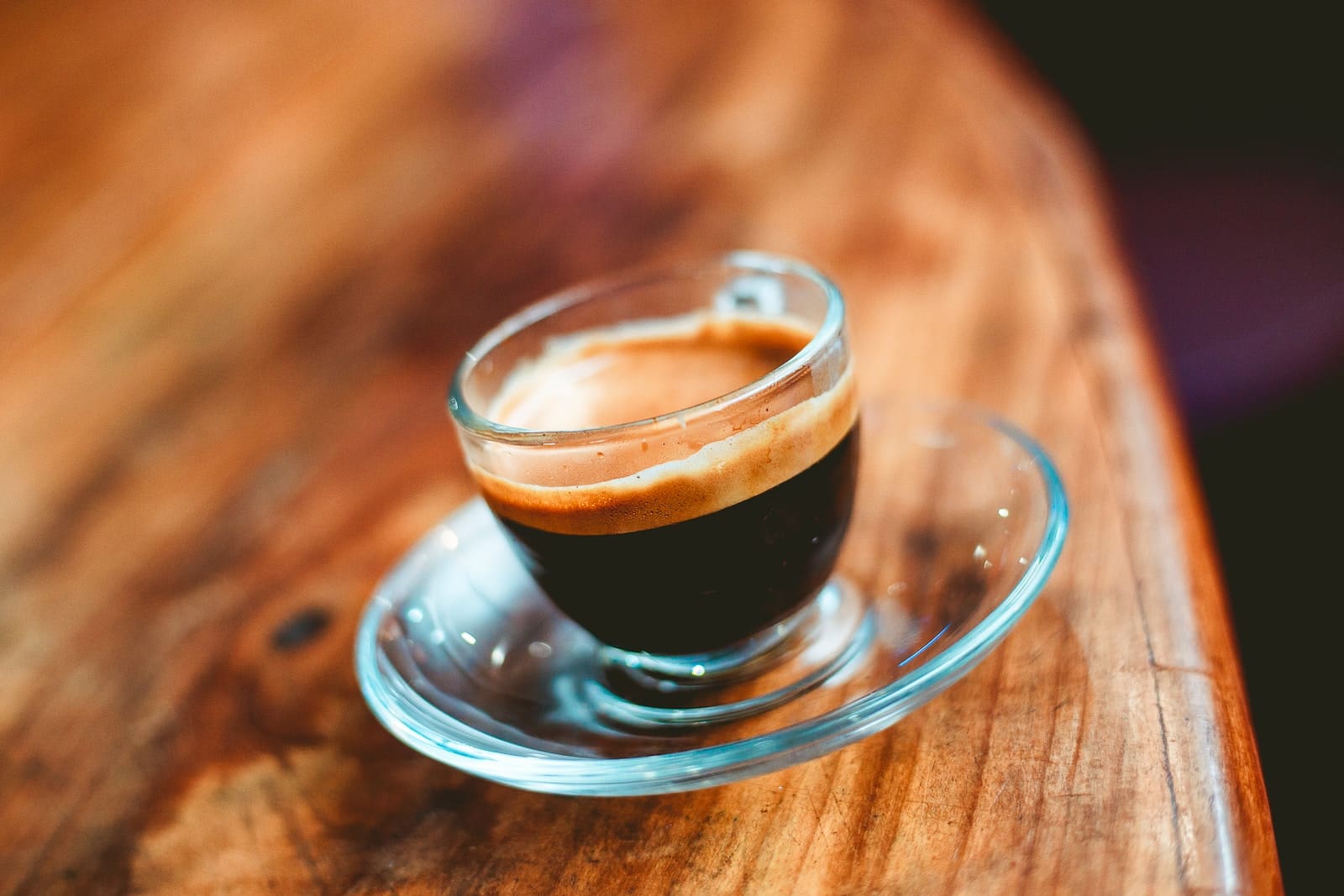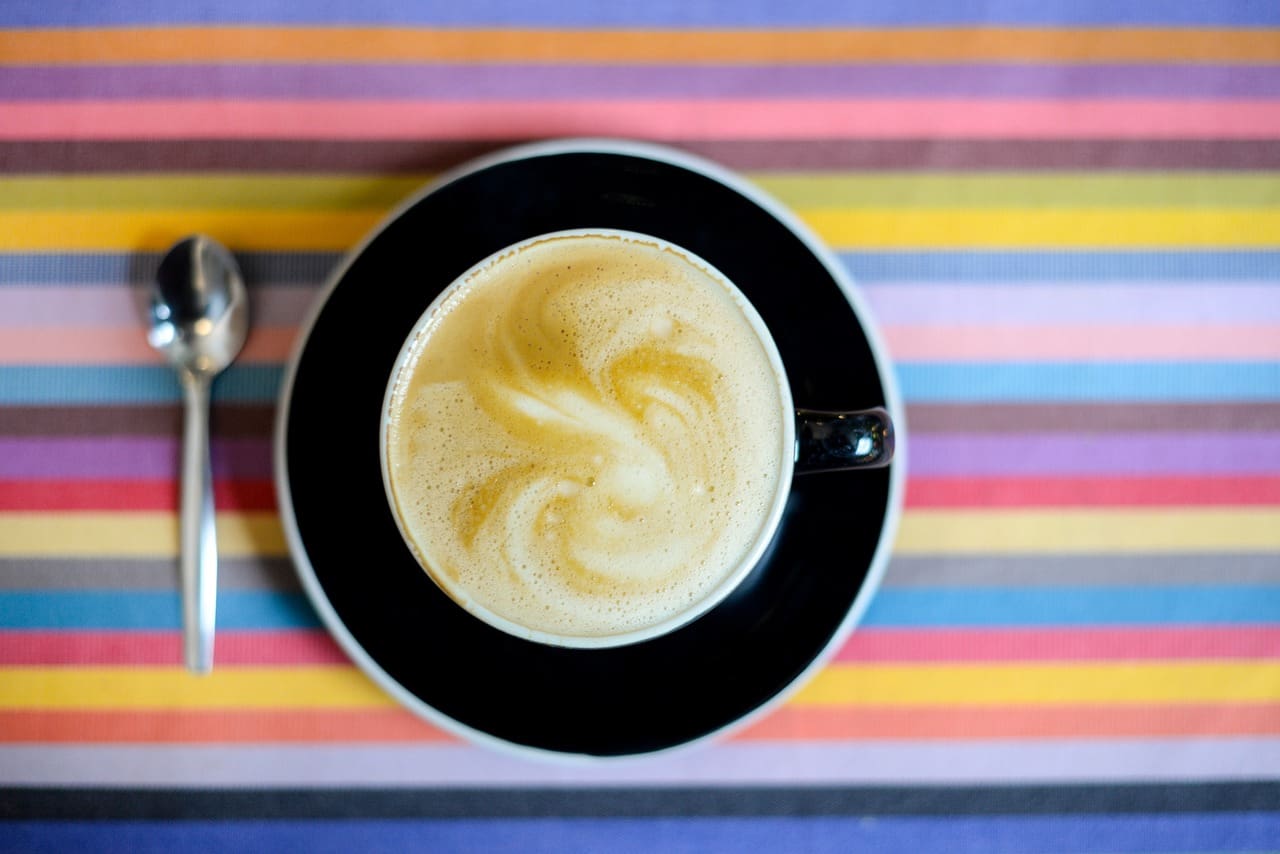Coffee is a drink that is prepared from roasted coffee beans that are produced by plants belonging to the Coffea genus. They give berry-like fruits that undergo certain processes to produce roasted green coffee beans.
These roasted beans are used to prepare coffee. As people may have grown accustomed to tasting, many types of coffee have evolved, with Espresso, Ristretto, and Lungo being some of them.
Key Takeaways
- Espresso is a standard coffee extraction method producing a small, strong shot of coffee, and lungo is a longer extraction, yielding a larger volume with a milder flavor.
- Ristretto, espresso, and lungo differ in brewing techniques, water-to-coffee ratios, and extraction times, resulting in unique taste profiles and caffeine content.
- All three coffee types are derived from the same base ingredient, espresso, but the variations in preparation methods create distinct coffee experiences for consumers.
Ristretto vs Espresso vs Lungo
Ristretto is a small shot of espresso. It tastes sweeter and much richer because of less hot water. Espresso is an intense coffee drink which is powerful, swiftly made with water and roasted coffee ratio of 1:2 topped with cream. Lungo is twice the size of an espresso shot and uses more water and time to make.

Espresso is a coffee brewing technique in which the water is passed through coffee beans at 8-10 bar pressure. Basically, Espressos are concentrated extracts of coffee that are given in small quantities, known as shots.
A Ristretto is an Espresso but with less water and brewing time. In Italian, “Ristretto” means “restricted”. This requires the same amount of coffee beans or coffee extract as before but less water and brewing time.
This requires half the amount of water and half the time an Espresso requires.
A Lungo is also an Espresso but with more water and brewing time. In Italian, “Lungo” means “long”.
This also requires the same amount of coffee beans or coffee extract as an Espresso needs but with double the amount of water and time an Espresso needs.
Comparison Table
| Parameters of Comparison | Espresso | Ristretto Espresso | Lungo |
|---|---|---|---|
| Percussor | coffee | coffee | coffee |
| Italian origin meaning | pressed coffee | Restricted | longer |
| Amount of water required | around 20-30 ml | Half the amount of espresso | double the amount of espresso |
| Time required to prepare | around 30 sec | Around 15 seconds | about a minute |
| Taste | a little bolder in taste | A little sweeter than espresso | bitter than espresso |
| Caffeine concentration | concentrated than coffee | less than espresso | less than espresso and ristretto |
| texture | thicker than coffee | Thick, dense, and syrupy | a little watery |
What is Espresso?
Espresso is a type of coffee that is of Italian origin. Espresso in Italian means “pressed coffee.” The name evolved as it is obtained by passing water through coffee beans at 8-10 bar pressure.
This gives a concentrated form of coffee as it contains less water than coffee. It requires 30 seconds to brew it in an Espresso machine.
There are many methods of preparing espresso, but using an Espresso machine is the easiest and quickest way.
Generally, Espresso machines are of two types steam and pump espresso machines. Steam espresso machines are challenging to handle, and the pressure is also difficult to handle.
A pump espresso machine is easy to handle, and the pressure is adjusted in most of the devices. Even though we can have an espresso machine, Espresso making is a complex skill to master.
The making process includes taking finely ground coffee beans into the espresso machine’s portafilter, tamping evenly,, and cleaning the group head.
Close the group head and keep it in the machine, and brew immediately. Be careful while brewing as it should get the correct amount of water, and maintaining pressure, and also in 30 seconds.
It passesout nearly 20-30ml of water in 30 seconds tnder 8-10 bar pressure.

What is Ristretto Espresso?
It is a type of Espresso that requires half the amount of water and time that regular Espresso requires. It still uses the same amount of coffee beans as an Espresso.
The word “Ristretto” is of Italian origin, meaning “restricted”. Usually, most coffee shops don’t offer them as this is less popular. Suppose you are an enthusiast and love Espresso. It should be tried.
Many machines are available with this option, or you can prepare it manually with a typical espresso machine. It is sweet as the brewing time is less, and the amount of water needed is extracted in less time, which is 15 seconds.
The making process takes the required amount of coffee extract that an Espresso needs, and water must be extracted at about 15-20 ml in 15 seconds.
The water extraction in the allotted time is the crucial part. You have to extract the maximum amount of water you can in 15 seconds.
It is combined with a cappuccino, latte, etc., but can also be taken normally. Cafes give two shots of Ristretto to make it the same volume as an Espresso.

What is Lungo?
Lungo is also a type of Espresso but requires double the amount of water and time that Espresso needs. For Lungo, the same number of coffee beans is necessary as for Espresso.
“Lungo” is of Italian origin, meaning “long”. This means that it takes a more extended amount of time to brew this coffee. If you are a caffeine and bitterness addict, you should try this.
The making process includes taking the required coffee extract and drawing it, around 50 ml in a minute. As the bitter elements dissolve in later stages, they have a bitter flavour that most don’t like.
It’s drawing water as much as a minute of it.
Also, there are so many machines with this option that there are many machines with this option. You can also make it manually with an available espresso machine.
Due to more water content, it is a little more watery than Espresso and Ristretto. The caffeine concentration is the same for all, but as this has more water, it seems to have a lower concentration of caffeine.
The amount of Lungo given can be observed as it is like two espresso shots. One can find a difference only after tasting them.

Main Differences Between Espresso, Lungo, and Ristretto
All are descendants of coffee but have some main differences, which include
- The Espresso needs nearly 20-30 ml of water. The Ristretto has half the amount of water as the Espresso, whereas the Lungo has double the amount.
- The Espresso takes 30 seconds, the Ristretto takes 15 seconds to brew or extract, and the Lungo requires a minute.
- Espresso is bolder in taste than coffee. Ristretto is sweeter in taste, and Lungo is bitter due to the time difference as bitter elements brew in later times.
- The Espresso is more concentrated than coffee, the Ristretto is syrupy and thick in texture, whereas the Lungo is a bit watery.
- They are derived from Italian but have different meanings. Espresso means “pressed coffee”, Ristretto means “restricted”, and Lungo means “long”.
- Espresso has more caffeinated concentration than coffee. Ristretto is stronger than Lungo as the caffeine concentration will be higher than in Lungo as Lungo has more water content, which decreases the caffeine concentration.
- https://onlinelibrary.wiley.com/doi/abs/10.1111/j.1745-4603.2004.35504.x
- https://iopscience.iop.org/chapter/978-0-7503-2596-7/bk978-0-7503-2596-7ch5.pdf
